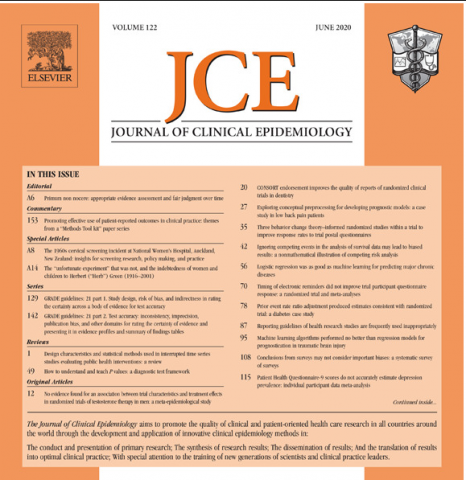Review of Interrupted Time Series (ITS) designs published in The Journal of Clinical Epidemiology

New research published today in the Journal of Clinical Epidemiology by ViCBiostat members Simon Turner, Prof Andrew Forbes, Dr Emily Karahalios and Dr Joanne McKenzie.
Abstract
Objectives
Interrupted time series (ITS) designs are frequently used in public health to examine whether an intervention or exposure has influenced health outcomes. Few reviews have been undertaken to examine the design characteristics, statistical methods, and completeness of reporting of published ITS studies.
Study Design and Setting
We used stratified random sampling to identify 200 ITS studies that evaluated public health interventions or exposures from PubMed (2013–2017). Study characteristics, details of statistical models and estimation methods used, effect metrics, and parameter estimates were extracted. From the 200 studies, 230 time series were examined.
Results
Common statistical methods used were linear regression (31%, 72/230) and autoregressive integrated moving average (19%, 43/230). In 17% (40/230) of the series, we could not determine the statistical method used. Autocorrelation was acknowledged in 63% (145/230) of the series. An estimate of the autocorrelation coefficient was given for only 1% of the series (3/230). Measures of precision were reported for 63% of effect measures (541/852).
Conclusion
Many aspects of the design, methods, analysis, and reporting of ITS studies can be improved, particularly description of the statistical methods and approaches to adjust for and estimate autocorrelation. More guidance on the conduct and reporting of ITS studies is needed to improve this study design.
Full article:
Turner SL, Karahalios A, Forbes AB, Taljaard M, Grimshaw JM, Cheng AC et al. Design characteristics and statistical methods used in interrupted time series studies evaluating public health interventions: a review. Journal of Clinical Epidemiology 122:1-11 2020. DOI: https://doi.org/10.1016/j.jclinepi.2020.02.006




